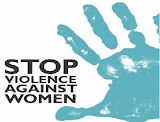The cold war is a global bipolar struggle known as aggressive Soviet foreign policy and the U.S. reaction (counter policy). This is periods of intense conflict and periods of Relative Corporation. It is not only about national interests but also ideologies. Cold war could be divided into 3 periods:
1_ Confrontation (1945 - 1962)
2_ From coexistence to détente (1963 – 1978)
3_ From renewed confrontation to rapprochement (1979 – 1991)
The Eastern Europe had been occupied by Soviets after WWII. However, only Greece and Turkey was not occupied by Soviets and they may be the next. For this reason, the U.S. President declared a doctrine (Truman Doctrine) that is the policy of the U.S. to support free peoples who are resisting attempted subjugation by armed minorities or by outside pressures. The U.S. would aid Turkey and Greece through this doctrine. This is the beginning of the period of Confrontation that is expansion and influence calls as Containment. On the other hand, Soviets or Communism was continuing to expanding; USSR made a coup and occupied Czechoslovakia. In addition to this, USSR blockades the West Berlin. In 1949, Chinese communists take the mainland China and Communist North Koreans invades pro-west South Korea. Because of this reason, the U.S. promised to protect new client states (South Korea & Iran) from external attack in a strategy. This is known as Extended Deterrence.
NATO is established by the leadership of U.S. to contain USSR in 1949. In the Korea War (1949-1955), the U.N. troops pushed North out, Korea remain partitioned. In 1950, communist China occupies Tibet. However, maybe the most important event happened in 1949, the USSR broke the U.S. atomic monopoly. The status quo moved from unipolarity to bipolarity. This was the balance of power, the movement away from confrontation. Atomic arms are a deterrent to Soviet aggression. In 1950, President Eisenhower and his Secretary of State, John Foster Dulles pursued a strategy termed `rollback`, which promised to move what was called the `Iron Curtain` separating the East and the West by liberating `the captive nations` of Europe. Communist leader Joseph Stalin has been dead in 1953. After him, Nikita Khrushcev pursued a policy of peaceful coexistence with capitalism. In 1955, the Warsaw Pact was established by the leadership of the USSR to confront NATO. In 1955, there was Geneva Summit provided important forum for the rivals` s meaningful dialogue about world problems, and I 1956, Soviets dissolved the Cominform that is Communist Information Bureau which coordinated the work of communist parties in other states. All these peace process is killed by Cuban Missile Crisis in 1962. However, all these peace process is killed by Cuban Missile Crisis in 1962. In spite of Cuban Missile Crisis, President Kennedy installed the hot line in 1963. The hot line is a direct communication system linking the White House and Kremlin. After the installment of hot line, some important treaties were signed between the USSR and the US in 1960s, such as Partial Ban Treaty, Outer Space Treaty, Glassboro Summit, and Nuclear Nonproliferation Treaty. In 1968, Soviet-American relations took a dramatic turn with Richard Nixon`s election. The National Security Adviser of the U.S.A; Henry A. Kissenger, and President Nixon initiated a new approach to Soviet relations that he officially labeled détente in 1969. The Soviets also adopted this term to describe their policies toward the U.S. In Kissenger`s words, détente sought to create ` a vested in cooperation and restraint`,` an environment in which competitors can regulate and restrain their differences and ultimately move from competition to cooperation.` To engineer the relaxation of Superpower tensions, Nixon and Kissenger pursued a linkage strategy to bind the two rivals in a common fate by making peaceful superpower relations dependent on the continuation of mutually rewarding. Thus, relations are dependent on the continuation of mutually rewarding. As a result of this, the relations between Soviets and America normalized. Arms control stood at the dialogue surrounding détente. The Strategic Arms Limitation Talks (SALT) initiated in 1969, sought to restrain the threatening, expensive and spiraling arms race. The talks produced 2 agreements, the first was in 1972 (SALT 1) and the second was in 1979 (SALT 2). SALT II was signed in 1979 but newer ratified by the U.S, because, Soviets invaded Afghanistan in 1979. Furthermore, anti-communist and communist forces fought in Vietnam War from 1959 until 1975. America damaged economically, militarily and psychologically in Vietnam War. When Soviets invaded Afghanistan, President Jimmy Carter viewed it, ` Soviet aggression in Afghanistan confronts all the world with the most serious strategic challenge since the Cold War began.` Because of this, he declared a declaration which is called as Carter Doctrine. This doctrine declares America`s willingness to use military force to protect its interests in the Persian Gulf. In addition to this, President Regan`s doctrine pledged U.S. support of anticommunist insurgents who sought to overthrow Soviet-supported governments in Afghanistan, Angola, and Nicaragua. In 1985, Mikhail Gorbachev came to power in the USSR. In his presidency period, there were some important events and policies. For instance, he was the first Soviet president who visits the U.S.A. Also, he was the founder of the new thinking policy in the U.S.S.R. which brings openness and restructuring to the U.S.S.R. In 1987, Intermediaterange Nuclear Forces (INF) disarmament agreement was signed between the Soviets and America. With this agreement, Soviet Union agreed to end its aid and support for Cuba and their forces withdrew from Afghanistan and Eastern Europe. 2 disarmament agreements are agreed by Gorbachev; Strategic Arms Reduction Talks (START) and Conventional Forces in Europe. However, peoples were not ready for all these things. New thinking policy is not supported by most of people of communist states. In 1989, the Berlin Wall is demolished and the East and West Germany merged. Moreover, the Warsaw Pact dissolved and finally, the USSR collapsed in 1991.
























